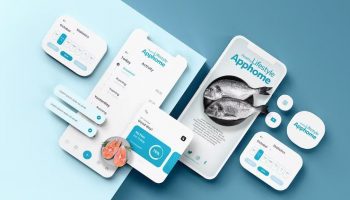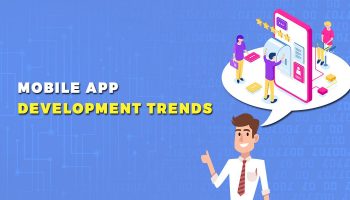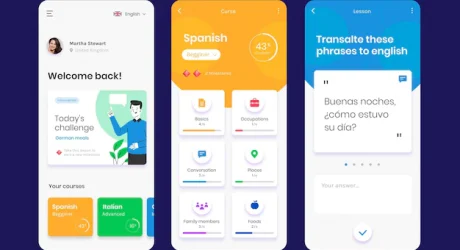In today’s world driven by innovation, portable applications have become an essential part of our lives. There seems to be an app for everything, from social media platforms to productivity tools to entertainment apps. In the background, these versatile applications are created in different ways.
In this article, we’ll look at different kinds of mobile app development, with a focus on local and web applications for smartphones.
Close By Applications
Neighborhood applications are planned and grown explicitly for a specific versatile working framework (operating system), like iOS or Android. These applications are built with stage-specific programming languages, instruments, and software development kits (SDKs).
Local applications have direct access to the device’s highlights, such as the camera, GPS, and message pop-ups, ensuring a consistent customer experience. Because they make better use of the hardware and programming skills of the device, local applications frequently deliver unparalleled execution and responsiveness.
Web Apps For Mobile Devices
In contrast to local applications, web applications for mobile phones can be accessed via a web browser and do not require installation from an application store. These applications are built with web technologies like HTML, CSS, and JavaScript. Because they can run on a variety of portable operating system platforms, they are extremely adaptable.
Web applications enjoy the benefit of being cross-stage viable in the light of the fact that they can be gotten to from any gadget with an internet browser, no matter what the working arrangement of the gadget.
How Is A Web App Different From A Mobile App?
Mobile apps are software programs that are built for specific platforms like smartphones, tablets, and other portable devices. The places to download a mobile app are Play Store for Android mobile phones and App Store for iOS.
On the other hand, a web app refers to self-sustaining software running completely on the web browser. It is extremely adaptive to almost any kind of device. Since they are not limited to any system, you do not have to install or download them.
It might be a little complex to choose any one alternative to suit your flexible applications advancement. But the below factors might make your decision easier.
Kinds Of Compact Programming
In the field of mobile app development, there are many different kinds of mobile apps that cater to the preferences and requirements of various users. A few normal sorts include:
- Application Programming: Applications that can assist with specific tasks and provide functionality include calculators, file managers, and weather apps.
- Apps for Social Media: Facebook, Instagram, and Twitter are well-known platforms that enable users to connect, share content, and communicate with one another.
- Online retail apps: These applications, which are compatible with online shopping experiences, enable customers to browse products, purchase them, and track their deliveries.
- Games applications: Gaming apps offer users of all ages both entertainment and engagement, ranging from lighthearted puzzle games to immersive 3D experiences.
Read Also: 5 Best Practices To Develop Software Applications For Startups
Potential For Versatile Application Improvement With Outstaffing
Outstaffing’s benefits are often used by organizations to additionally smooth out the portable application advancement process. Outstaffing is the practice of utilizing outside resources or dedicated teams to enhance an organization’s internal development capabilities.
Associations can get adequately near a pool of talented specialists with expertise in convenient application improvement by outlining a relationship with a dependable outstaffing provider. This strategy has advantages such as adaptability, affordability, and access to a wider range of skills.
Outstaffing arrangements provide businesses with access to the specialized skills and domain expertise required for web app development, native app development, or a combination of the two, making them particularly useful for mobile app development projects.
Whether you’re fostering a responsive web application that deals with various cell phones or an intricate local iOS application, outstaffing allows you to scale improvement groups in view of venture necessities and timetables.
Considerations For Flexible Application Advancement
In order to meet requirements like scalability and fault tolerance, it is critical to deploy client applications. However, there are certain considerations that must be made while opting for portable application development. Read further to discover them.
Rare Occurrence Of Error Paths
This might already exist for applications that are re-connectable. However, they are most likely to be deployed into uniform clusters. For instance, any inflight work unit is backed out and resets the browse cursors following a reconnect. These can be a rare event for a re-connectable application in the existing environment.
Affinities Related To A Queue Manager
You must be well aware of how an application should connect back to a similar queue manager always. As a result, there is a need to configure the application in order to establish reconnection with the queue manager. Although necessary, these affinities are temporary. For example, waiting for a feedback message.
Balancing The Algorithm
Thirdly, you might have to consider the factors that influence the balancing algorithm for these affinities. It is easy to locate them from the application code. You can always get more details on this alternative through a similar approach via configuration. Instead of the application code, programs must be reconfigured here.
Conclusion
In the field of portable application advancement, engineers have two choices: creating local applications or web applications for cell phones. Nearby applications offer better execution and admittance to gadget highlights, yet each stage requires its own turn of events.
Web applications, on the other hand, allow for cross-stage similarity, but they may limit how certain device features can be used.
Developers and organizations can make decisions that are more accurate based on the requirements of the project, the intended audience, and the desired functionality with an understanding of the various types of mobile apps and the methods used to create them.
Businesses can accelerate their mobile app development projects with the help of our staffing, dedicated teams, and external resources.
Mobile app development continues to evolve in response to the ever-increasing requirements of mobile users. Whether it’s a native app developed specifically for a particular platform or a web app that can be accessed from any device.
Outstaffing offers businesses the flexibility and expertise they require to develop innovative, user-friendly, and profitable flexible applications.
Additionals:




























